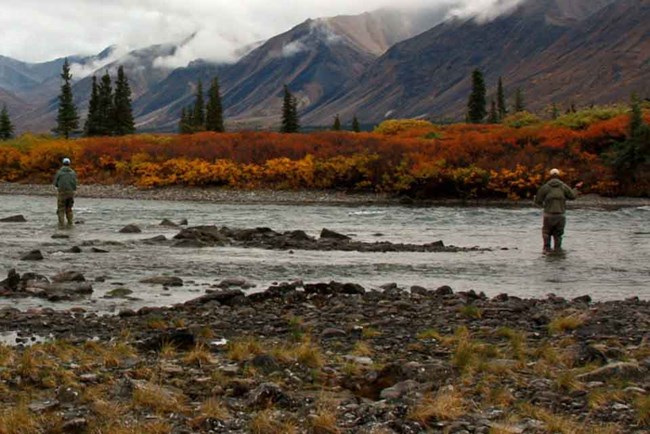
NPS/Kevyn Jalone
The Alaska National Interest Lands Conservation Act (ANILCA) made unprecedented allowances for access and activities not normally found in Lower 48 wilderness areas. Prior to the passage of ANILCA, people all over Alaska were involved in widely dispersed activities like backcountry recreation, cabin building, hunting, fishing, trapping, and small-scale mining—often in very remote settings. Their methods of transportation varied widely, from foot travel and dog sleds to snowmachines, motorboats, and airplanes.
To satisfy the demand for protection of the wildlands of Alaska, Congress realized that some special exceptions would be necessary to honor Indigenous and rural ways of life and to accommodate transportation needs. Providing rural residents the opportunity to continue their subsistence way of life is one of the primary purposes of ANILCA. ANILCA’s recognition of subsistence serves as a model for balancing wilderness preservation and human uses on the landscape.
In Wilderness outside Alaska, the following are generally prohibited. In Alaska, ANILCA makes the following exceptions:
- ANILCA 811 provides for subsistence use and access.
- ANILCA 1110(a) allows use of snowmobiles, motorboats, airplanes, and nonmotorized surface transportation for traditional activities and for travel between villages and homesites.
- ANILCA 1315(d) allows public use cabins or shelters for the protection of public health and safety.
- ANILCA 1316(a) allows temporary campsites, tent platforms, shelters, and other temporary facilities and equipment directly and necessarily related to the activities of taking fish and wildlife where such activities are allowed.
- ANILCA 1313 allows sport hunting in Preserves in Wilderness
Last updated: December 13, 2023
